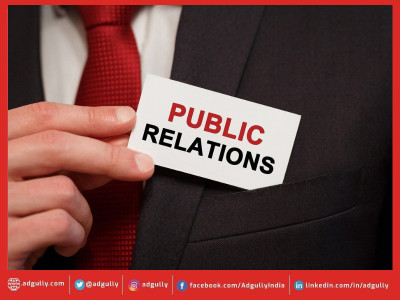Driving ROI in PR with data analytics: Experts share strategies to up the A game
In today’s rapidly evolving digital landscape, the role of smart tech and data analytics has become paramount across industries. Just as advertising and marketing have embraced these technological advancements, PR professionals are leveraging data expertise to revolutionise their strategies. The integration of data analytics is reshaping PR, media, and tech strategies, offering businesses key advantages in navigating the dynamic business environment.
“With the lines of marketing, PR and communications blurring, the need to bring evaluation and due diligence to campaign strategy has been amplified by leaps. The only way to tackle this is to embrace smart technologies like AI, ML that bring the true value of ROI deep diving to extract where the money spent is really demonstrating results – be it connections or leads, media buy in, share of voice , social media trend analysis, SEO or even thought leadership positioning,” noted Mou Chakravorty, Associate Director - Marketing Communications, Deloitte India.
AI applications also bring in ways to cut through mundane tasks, bringing automation for efficient use of talent at a time when balancing client demand, processes and people crunch have become challenging due to the fast pace digital movement, she added.
Integration of data expertise reshaping PR, Media & Tech strategies
According to Jyotsna Dash Nanda, AVP - Corporate Communications, Dharampal Satyapal Group (DS Group), “Data is the new PR gold. Traditionally seen as an “art”, PR is becoming a “science” with data analysis. The integration of data expertise is revolutionizing PR, Media, and Tech strategies. Data analysis allows for smarter targeting, measurable success through campaign tracking, and crafting messages that resonate with audiences. Data shows the impact of campaigns, allowing for adjustments and resource allocation based on what's working. PR professionals armed with data expertise can adapt and evolve their strategies. This shift from intuition to data-driven insights empowers businesses to navigate the evolving landscape with a competitive edge.”
Akanksha Jain, Head - Public Relations & Corporate Communications, BharatPe, explained, “The integration of data expertise helps PR and Communications professionals to better understand the impact created by the PR campaigns. Communication leaders can have access to data not only in terms of number of stories, but also in terms of more holistic impact like sentiment check, effectiveness in terms of messaging, tonality of the stories, and reach across locations. Today, there are tools available that can help Communication leaders understand the efficacy of a campaign or an announcement, or get a sense of what did not work for them, so they can make the required iterations.”
Ajey Maharaj, Head of Corporate Communications & PR, Fortis Healthcare Ltd, too, considered the incorporation of data analytics into Public Relations (PR), Media, and Technology strategies to be a significant shift in the way businesses strategize their communication and establish their market presence. He added, “In an era where information is abundant and consumer attention spans are short, the application of data analytics offers businesses a distinct competitive advantage. This approach enables them to traverse the dynamic business environment with unmatched precision and foresight.”
“With the advent of AI and similar technologies, data takes the centre stage in PR like it does in many other professions,” noted Tanmana Rath, Lead Communications and Stakeholder Management at TERI, adding, “In today’s rapidly evolving PR landscape, precision is paramount. Creating effective PR strategies demands a profound understanding of the target audience, their preferences, and the dynamic media environment. Here, data analytics emerges as a transformative force, equipping PR professionals with a treasure trove of insights to drive informed decisions. The advantages are manifold. Through harnessing data analytics, PR experts can pinpoint emerging trends, dissect consumer behaviour, and tailor their messaging with precision. The ability to foresee and promptly react to market fluctuations is priceless. Whether it’s adapting to shifts in media consumption patterns or refining communication strategies based on audience sentiment, data-driven PR approaches are reshaping the rules of engagement.”
The advantages
Data-driven decision making helps Communication leaders craft a more robust and impactful strategy that can help get the required results, pointed out Akanksha Jain. Communication leaders can also be better prepared in case of a crisis as these tools can help them map the overall digital universe and observe outliers, if any. One can also understand who are media friends and which media houses are constantly publishing negative reportage about the company. “Also, by using data analytics, Communication leaders can talk in terms of micro as well as macro-impact across a range of cohorts, and not only limit to number of stories or AVE. This resonates better with the management of a company,” Jain added.
Fortis Healthcare’s Ajey Maharaj listed the following key advantages and benefits:
Advantages for Businesses:
- Targeted Communication: Through data analytics, businesses can segment their audience by demographics, preferences, and behaviours, crafting messages that resonate deeply and foster engagement.
- Measurable Outcomes: Data expertise allows companies to define clear, quantifiable objectives for their PR and media campaigns, evaluate performance, and fine-tune their strategies for maximum effectiveness.
- Strategic Decision Making: Insights derived from data analytics equip businesses with the knowledge to make informed choices, efficiently allocate resources, and stay ahead of market trends and opportunities.
Benefits for PR Professionals:
- Enhanced Campaign Efficiency: Leveraging data-driven insights, PR professionals can pinpoint the most impactful channels and messages, leading to campaigns that not only reach, but resonate with their intended audience.
- Improved Crisis Management: The capability for real-time monitoring of data enables PR experts to swiftly identify and address potential issues or negative perceptions, safeguarding the brand’s reputation.
- ROI Measurement: Data analytics plays a crucial role in quantifying the return on investment for PR activities, underscoring their value and supporting the case for future budget allocations.
Through the analysis of data, PR professionals gain valuable insights into audience behaviour, media landscape, sentiment trends, and emerging patterns, noted TERI’s Tanmana Rath, adding, this enables them to enhance their strategies, showcasing the tangible value of PR initiatives to stakeholders. “Leveraging data-driven decision-making, communication experts can take a deep dive into customer behaviors, preferences, and needs. By dissecting customer data, they refine their strategies to ensure precise message delivery to the intended audience, crafting bespoke communication strategies tailored to specific demographics and timing for optimal impact,” she said.
Highlighting the advantages, Jyotsna Dash Nanda of DS Group shared:
Sharper Targeting: Traditionally, PR relied on intuition and experience to target audiences. Data analytics provides a more scientific approach. By analyzing demographics, social media engagement, and media consumption habits, PR teams can identify the exact audience segments most receptive to their message. This laser focus ensures resources are directed towards those who matter most.
Content Optimization: Data analytics helps craft compelling content. By understanding what resonates with target audiences (preferred topics, keywords, content formats), PR professionals can tailor messages to generate higher engagement. This data can also reveal sentiment around certain topics, allowing PR teams to address concerns or adjust messaging accordingly.
Campaign Measurement & Improvement: The true impact of PR efforts can be elusive. Data analytics offers a solution. By tracking website traffic, social media mentions, media coverage sentiment, and brand awareness metrics, PR teams can measure the effectiveness of campaigns. This data allows for adjustments and optimizations throughout the campaign lifecycle, maximizing its impact.
Crisis Communication: Social media and the 24/7 news cycle can quickly turn a minor issue into a major crisis. Data analytics allows for real-time monitoring of online sentiment and media coverage during a crisis. This empowers PR teams to identify emerging concerns, respond swiftly, and shape the narrative effectively.
Data-Driven Decisions: Intuition and experience are valuable assets, but data provides a powerful foundation for decision-making. PR professionals can leverage data insights to choose the most appropriate communication channels, craft stronger media pitches, and tailor messaging for maximum impact. This data-driven approach ensures PR strategies are relevant, timely, and deliver measurable results.
Akanksha Jain added here, “Data analytics empower PR professionals with a single-window view that helps them understand the challenges with reference to specific media houses/ locations that may not be reporting in line with the narrative they want to build. The leaders can accordingly focus on building relationships and try and drive a positive narrative building.”
Jyotsna Dash Nanda concluded by saying, “In today’s dynamic market, where audience preferences and media consumption habits are constantly evolving, data analytics equips PR professionals to navigate this complexity. By leveraging data, PR teams can develop targeted, impactful campaigns that resonate with their audiences and achieve their desired outcomes.”


















Share
Facebook
YouTube
Tweet
Twitter
LinkedIn